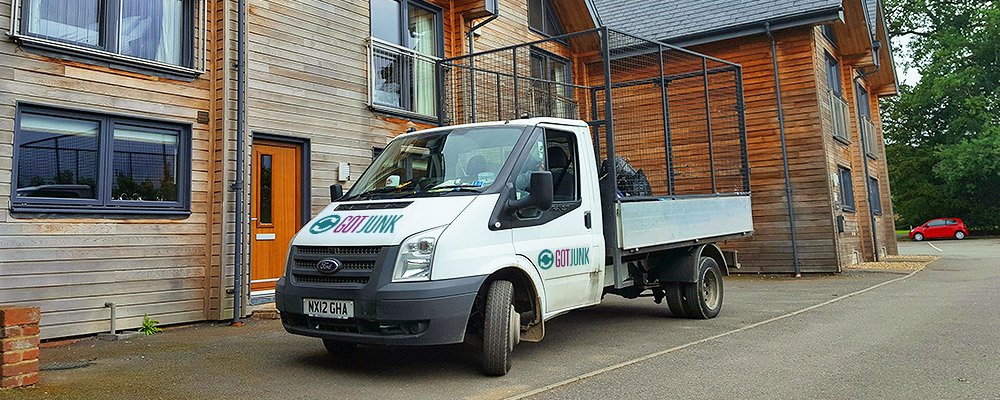Guidelines for Smooth Junk Hauling
Posted on 11/09/2025
Junk hauling might seem like an overwhelming task, especially when faced with a mountain of clutter. However, with a well-organized approach, you can transform this daunting chore into a manageable project. This guide will walk you through the steps necessary for smooth junk hauling, ensuring that your endeavor is both effective and stress-free.
1. Assess the Scope of the Project
The first step in any junk removal project is to understand the amount and type of junk you need to remove. Take a walk through your home or property and make note of the items you plan to haul away. Categorize them into various types such as recyclables, donations, hazardous waste, and general trash.
By assessing the scope of the project, you will determine if you can handle the task yourself or if you need to hire a professional junk removal service. This assessment will also help you estimate the size of the dumpster you might need or the number of trips to the local landfill.

2. Gather the Necessary Supplies
Once you have a clear understanding of the project, gather the supplies you'll need. These supplies may include:
- Trash bags
- Boxes or bins
- Gloves
- Protective clothing
- Labels or markers
- Cleaning supplies
Having all the necessary supplies on hand will ensure that you can work efficiently without unnecessary interruptions.
3. Sort Items Methodically
Sorting is a crucial step for smooth junk hauling. Designate different areas or containers for different categories. Common categories include:
- Throw Away: Items that are broken, damaged, or have no useful life left.
- Recycle: Materials that can be recycled such as paper, plastic, and metal.
- Donate: Items that are still in good condition but are no longer needed. Consider donating to local charities or organizations.
- Hazardous Waste: Items like batteries, paints, and chemicals which require special handling.
Being methodical about sorting not only makes the process smoother but also ensures environmental responsibility.
4. Decide on Disposal Methods
Each category of junk necessitates a different disposal method. Here are some options to consider:
- General Trash: Arrange for regular pickup services or make trips to the landfill.
- Recyclables: Utilize curbside recycling if available or take items to recycling centers.
- Donations: Drop off items at local charity shops or schedule pickups.
- Hazardous Waste: Research local disposal guidelines and facilities that handle hazardous materials.
Understanding disposal options beforehand minimizes delays and ensures that all items are handled appropriately.
5. Plan the Logistics
Proper planning of logistics can greatly enhance the efficiency of your project. If you are handling the junk hauling by yourself, consider the following:
- Renting a suitable vehicle or trailer.
- Scheduling multiple trips to disposal sites if necessary.
- Ensuring you have help for lifting heavy items to prevent injuries.
If hiring professionals, discuss the logistics with them in detail. Ensure they have clear instructions on where to pick up the junk and how you want different categories handled.
6. Safety First
Safety should be a top priority during junk hauling. Follow these safety guidelines:
- Wear protective gloves and clothing.
- Be cautious of sharp objects or hazardous materials.
- Lift heavy items correctly to avoid back injuries.
- Ensure walkways and areas are clear of tripping hazards.
By adhering to safety protocols, you can prevent accidents and make the junk hauling process much smoother.
7. Hire Professional Junk Haulers
If the project seems too large or if you simply prefer to leave it to the experts, hiring professional junk haulers can save you time and effort. Here are some tips for choosing the right service:
- Check reviews and testimonials from previous clients.
- Verify if the company handles specific types of junk you need removed.
- Ensure they are licensed and insured.
- Request a detailed quote including any additional fees.
Professionals can handle the heavy lifting, proper disposal, and even provide additional services such as cleaning the area, making your junk hauling experience seamless.

8. Clean and Organize the Space Post-Removal
Once the junk has been removed, take time to clean and organize the space. This not only improves the appearance of the area but also prevents future junk accumulation. Here are some tips:
- Sweep or vacuum the area thoroughly.
- Disinfect surfaces if necessary.
- Consider organizational tools such as bins, shelves, or storage units.
- Establish a system for future waste and recycling management.
A clean and organized space can enhance your living environment and reduce the likelihood of clutter building up again.
Conclusion
Junk hauling doesn't have to be an intimidating task. By assessing the project, gathering necessary supplies, sorting items methodically, deciding on disposal methods, planning logistics, prioritizing safety, and possibly hiring professionals, you can make the process smooth and efficient. Post-removal, ensure the space is cleaned and organized to enjoy a clutter-free environment. Following these guidelines will help you tackle any junk hauling project with confidence and ease.





